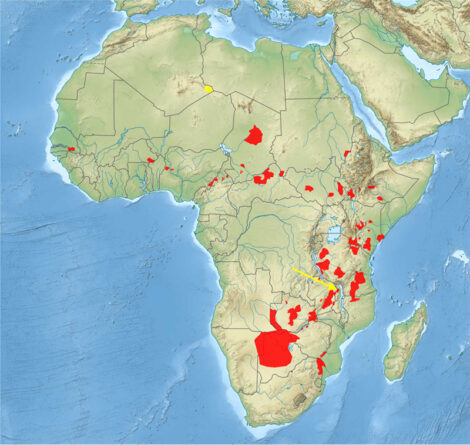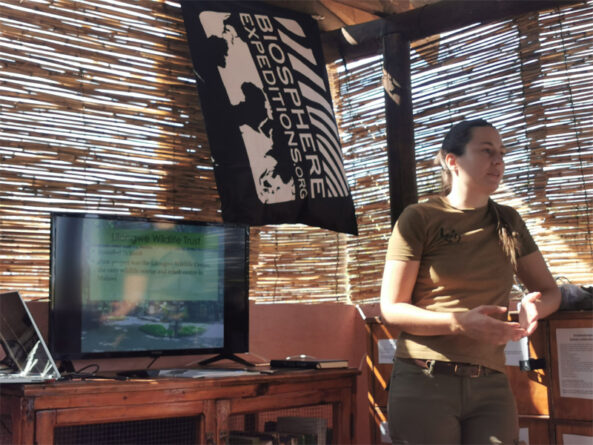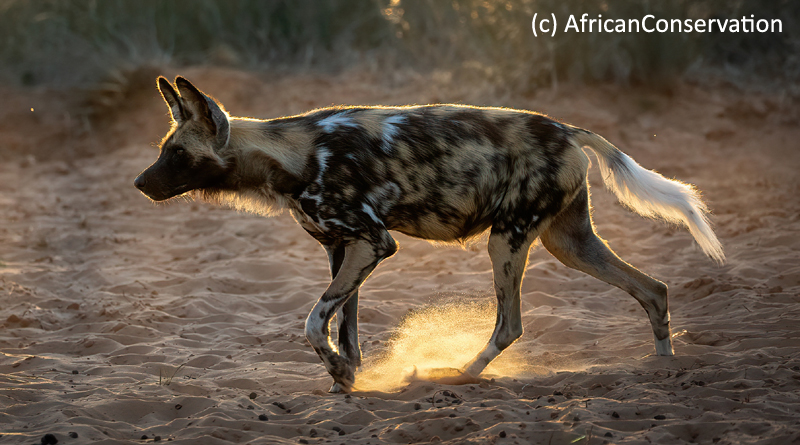AFRICAN WILD DOG
The African wild dog is an iconic flagship species, endangered throughout its range, with an estimated 6,600 adults living in 39 subpopulations, all threatened by habitat fragmentation, human persecution and outbreaks of disease. This is the bad news. The good news is that citizen scientists of Biosphere Expeditions and professional scientists of the Lilongwe Wildlife Trust have recently shown in a scientific paper that the species is present in Vwaza Marsh Wildlife Reserve in Malawi, the first record of the species since an unconfirmed report in 2011.

Most African wild dog (scientific name Lycaon pictus) populations are in decline and primarily restricted to protected areas. As a species that occurs at low densities, with a strict reproductive social structure, wild dogs rely on travelling long distances to colonise new areas, reproduce and form new packs. It is therefore good news that during a biodiversity monitoring camera trap survey, citizen scientists of Biosphere Expeditions and professional scientists of the Lilongwe Wildlife Trust were able to capture pictures of wild dogs in Vwaza Marsh Wildlife Reserve, Malawi. The eleven photos of probably three individual wild dogs represent the first documented evidence of the species in Vwaza and the first record since an unconfirmed report in 2011.

Probably coming in from Zambia
Olivia Sievert, the Lilongwe Wildlife Trust’s lead scientist of the research expedition at the time and lead author of the scientific paper thinks that “probably this group of wild dogs moved into Vwaza through the Malawi-Zambia Transfrontier Conservation Area (MZTFCA), with the MZTFCA linking protected areas in Malawi with the Luangwa Valley, Zambia. Our photos and similar documentation in Kasungu National Park, Malawi, show that large carnivores can move through the MZTFCA into protected areas in Malawi. This is a good indication that the MZTFCA provides an important dispersal corridor for wild dogs and other large carnivores to move into Malawian protected areas. But as always, more research is needed to be sure.”
The power of citizen science
Dr. Matthias Hammer, is a co-author of the scientific paper and the executive director of the NGO Biosphere Expeditions, which empowers ordinary people to support wildlife conservation projects worldwide as citizen scientists, such as on this project in Malawi. He says: “This shows once again the power of citizen science. These camera traps would not have been out in the field had it not been for our citizen scientists placing and maintaining them or making the whole research expedition possible through the manpower and funding they provide. We are proud to be able to support local NGOs such as the Lilongwe Wildlife Trust and their professional scientists to achieve such outcomes together.”

Jonathan Vaughan, CEO of the Lilongwe Wildlife Trust agrees: “Such partnerships are win-win showcases for how conservation can work on the ground. Our projects and professional scientists receive recognition and support, and the citizen scientists get an adventure with a purpose in return, which produces tangible results such as this wild dog record.”
FACT BOX
Biosphere Expeditions is a wildlife conservation non-profit first and foremost, driven by science and citizen scientist. A member of the IUCN, the UN’s Environment Programme and the European Citizen Science Association, Biosphere Expeditions works hand-in-hand with local biologists and communities since 1999, championing change and the protection of nature.

